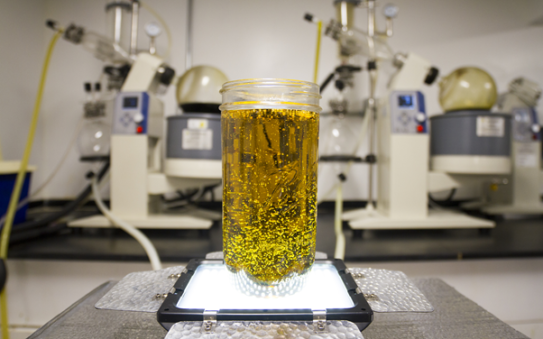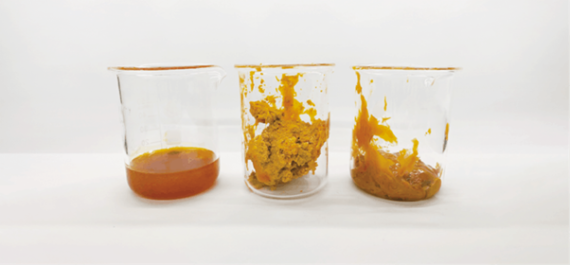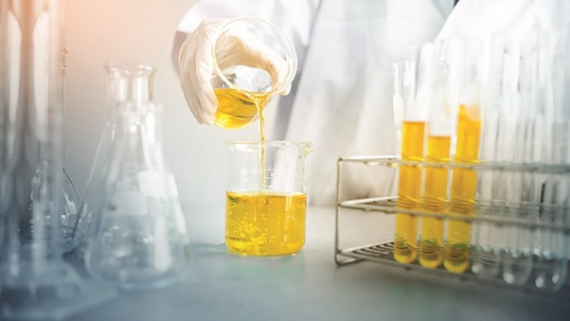- Your cart is empty
- Continue Shopping
Top 3 Methods For Solvent-Based Cannabis Extraction
- Cannabis Industry
- Posted on
-
by John
- 1 comment

With the gradual legalization of Cannabis across the world, especially North America, cannabis businesses are exploring and weighing the best production processes. This includes the various extraction methods – extraction techniques separate the desired compounds from the plant matrix.
Cannabis extraction is an umbrella term for the different processes used to separate the chemicals in Cannabis from the plant material. While many methods of extraction exist like reflux, rotary evaporation, winterization, etc., this piece will focus on the three most common cannabis extraction techniques: Hydrocarbon extraction, CO2 extraction, and ethanol extraction.
The Method Of Solvent Based Extraction
Solvents for extracting cannabinoid-derived compounds have widely been used in the cannabis industry for a long time. They’re popular due to various reasons:
- They’re simple to expand
- They are effective in making the final product like you want
- They are relatively safe when you’re following local as well as federal regulations and laws.
Solvent-based extraction techniques produce high-potency extracts of cannabis biomass using various closed-loop systems. In a closed-loop system, the solvent is pumped through a vessel that contains plant biomass. It is then separated from the essential components and is later separated from the oil in an additional container. The solvent is recovered afterwards and used again.
The states that allow recreational and medical Cannabis use frequently, have limits which require the producers to test their products before selling them to the public. If the test sample of the product is contaminated more than the allowed limit, the product cannot be sold. [1]
Butane And Propane-Based Extraction (Hydrocarbon Extraction)

If not carried out under experienced and skilled supervision, this is a risky method. Cannabis extracts containing butane are known as butane oil. Butane is one of the most flammable substances in its gaseous form. This is why this procedure requires extra care and air-filtration equipment to avoid gas explosions. Furthermore, any residual butane present in the final extract could be disastrous since butane is highly poisonous to human beings.
The extraction process would require pressurized heating units with air-filtration systems to regulate butane levels in the air. Refining circulators are then used to take out and recycle any residual butane. With both cannabis and butane liquid in the same pressurized container brewing under controlled temperature and pressure, butane can be separated by heating it in a vacuum. This evaporates the liquid butane.
It is a prevalent technique, mainly since the equipment is minimal and affordable. In addition, some producers would prefer propane as a solvent. The process for propane is identical to that of butane; the only difference is that the higher pressure ensures that the propane remains in a liquid state. As propane has a lower boiling point, evaporation happens at a cooler temperature.
Hydrocarbons used for the extraction of cannabinoids are becoming more well-known. This is not just because of the low price of the equipment for hydrocarbon extraction but a variety of other reasons too.
- Quality and authenticity of the strain– The use of hydrocarbons will help maintain the original flavor profile of the strain. These kind of extracts were once considered to be high-end or “niche” but are becoming widely popular among consumers looking for THC and CBD alike.
- Lesser Time– In most end-products, the hydrocarbon cycle takes around an hour. This is considerably more efficient than supercritical CO2, ranging from 6 to 10 hours.
- Use Trim– Hydrocarbons facilitate extraction of cannabinoid compounds from less attractive areas of the cannabis and hemp plant, such as the trims. The leftover trimmings, the tiny leaves cut off from the buds after harvesting, are an efficient method of extracting high-quality, cannabinoid-rich resins.
- Higher Yield– Hydrocarbon extraction may produce a yield of 14-30% by weight, leading to higher utilization of the plant materials. [2] [3]
CO2 Extraction

CO2 (Carbon Dioxide) Extraction uses CO2 under controlled pressure to extract CBD, THC, and other cannabinoids out of Cannabis and hemp. CO2 is a solvent when it is heated to specific pressures and temperatures. It is utilized to extract concentrates at extreme pressures and temperatures to separate, preserve and maintain the quality of the extracts. CO2 extraction involves advanced technology, training, and knowledge than other extraction methods. However, the product is pure, potent, and entirely without chlorophyll when done correctly.
When you talk about CO2 extraction, you’ll hear supercritical, middle-critical, and subcritical terms. Supercritical CO2 is the most widely employed CO2 method for extracting cannabinoid derivatives due to it being safe and offering the purest end product.
Supercritical extraction uses CO2 in the form of liquid and raises the pressure and temperature to the point at which CO2 attains its Supercritical point. At a supercritical point, CO2 has the properties of liquid and gas. This is ideal for extracting cannabinoid compounds since it dissolves CBD and THC like liquid, yet it can be very easy to expand and fill the vessel like gas.
CO2 extraction offers many advantages that are appealing to both the consumers and extractors. One of them is an eco-friendly or ‘green’ solvent. It doesn’t leave any nasty chemical residues and creates an environment-friendly and cleaner end product.
Here are the advantages of using the CO2 extraction method for Cannabis:
- Safe- CO2 is safe for edible use (for soft drinks) and is non-flammable and inert. It is also non-toxic.
- Effective- You can adjust its strength by adjusting the liquid’s density.
- Negligible residues- Nearly no residue is left after extraction compared to other solvents. This forms a highly purified final product.
- Ideal solvent- The critical temperature of CO2 is close to room temperature, which means it is an excellent solvent for temperature-sensitive materials. [3]
Alcohol (Ethanol) Extraction

Ethanol is a colorless, volatile, and ignitable liquid that can easily catch flames. Not only is it relatively safe and easy to use, but the process also has the advantage of a reasonably rapid learning curve.
Many common forms of cannabis extraction use solvents, like alcohol. In alcohol extraction, Cannabis is soaked in alcohol, typically ethanol. First, the plant material is removed followed by the removal of the liquid, and finally the alcohol is removed by evaporation. One of the most challenging problems lies in the inherent polarity of solvents like alcohol, which can dissolve in water. It can easily mix with other water-soluble molecules such as chlorophyll. Removing the chlorophyll from the extract is crucial since it can cause an undesirable bitter taste.
This process can be carried out under atmospheric pressure, but the temperature must be controlled when evaporation occurs. The process is quite lengthy and must be performed with care to ensure safety. One of the significant advantages of this extraction method is that it does not pose a danger of leaving harmful residual chemical compounds in the final extract of Cannabis. This also allows the co-extraction and extraction of all compounds of interest, mainly Cannabinoids, and Terpenoids.
Ethanol is a fantastic choice for production in large quantities and is ideal for producing cannabinoids for a commercial enterprise of enormous size. It’s widely believed to be the most secure and efficient solvent for hemp and cannabis extraction. Due to its flexibility and convenience, it’s in a suitable position to handle almost every kind of extraction. This is particularly true for hemp and cannabis extraction because of the following reasons:
- Dissolves the majority of non-polar and polar compounds.
- Has a solid affinity for cannabinoids when extracted at low temperatures.
- Non-viscous liquids do not exist at atmospheric pressure, which means they can be extracted rapidly.
- Boils at a low temperature, allowing for efficient recapture of the ethanol and then the separation of compounds extracted.
- It is relatively safe, simple to work with, and easily manufactured.
- It is easy to store: Based on the AHJ (Authority Having Jurisdiction), storage requirements for ethanol are usually more flexible, allowing your lab to keep more solvent in its storage and extract more significant quantities of hemp and Cannabis simultaneously.
- This eliminates the need for the removal of wax and winterization when performed in freezing conditions in a safe manner.
- Excellent for making hemp extracts with a full spectrum and tinctures. [4]
Conclusion
The choice of the solvent depends on the product you are making and how potent you want your final extract to be. There is no perfect solvent because it all boils down to product profiles, purity, and cost. Hydrocarbon extraction is used for low-weight oils such as trim, while CO2 extraction is used for full-weight flowers that are already mature. Cannabis extractions can either be done before the curing or after the curing. The best solvent to use depends on your tastes and your end product. Tracking the purity of the solvents is also crucial when you are manufacturing cannabis extracts. Yes, they might be legalized, but until they’re free from any potentially harmful residues of the chemical solvents, make sure you’re purchasing a safe solvent.
References:
[1]-https://blog.lunatechequipment.com/the-5-most-common-cannabis-extraction-methods
[2]- https://infinitabiotech.com/blog/cannabis-oil-extraction-methods/

If some one wishes expert view on the topic of blogging then i advise him/her
to pay a visit this weblog, Keep up the nice work.
aid for ukraine